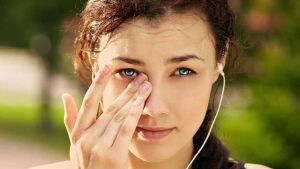Understanding Vision Loss
Vision loss, a condition affecting millions worldwide, poses significant risks to individuals’ quality of life and overall well-being. In this comprehensive article, we delve deep into the various factors contributing to vision loss, shedding light on unexpected risks that often go unnoticed.
The Prevalence of Vision Loss
With the aging population on the rise globally, the prevalence of vision loss is becoming an increasingly pressing concern. According to the World Health Organization (WHO), approximately 2.2 billion people worldwide have some form of vision impairment, with more than 1 billion individuals living with moderate to severe vision loss that could have been prevented or treated.
Uncovering Hidden Risks
While aging and genetic predispositions are commonly associated with vision loss, several unexpected factors can also contribute to this condition. Environmental factors such as prolonged exposure to UV radiation, blue light emitted from digital screens, and air pollution can all have detrimental effects on eye health.

UV Radiation: The Silent Culprit
Excessive exposure to ultraviolet (UV) radiation from the sun is a significant risk factor for various eye conditions, including cataracts, macular degeneration, and pterygium. Despite the widespread knowledge of the damaging effects of UV rays on the skin, many people overlook the importance of protecting their eyes from sun exposure.
Digital Eye Strain: A Modern Epidemic
In today’s digital age, the prolonged use of electronic devices such as smartphones, computers, and tablets has led to a rise in digital eye strain. This condition, also known as computer vision syndrome, can cause symptoms such as eye fatigue, dryness, blurred vision, and headaches, ultimately contributing to long-term vision problems if left unaddressed.
Air Pollution: A Threat to Eye Health
Air pollution, characterized by the presence of particulate matter, ozone, and other harmful substances in the atmosphere, poses significant risks to eye health. Studies have shown that exposure to air pollution is associated with an increased risk of developing age-related macular degeneration, cataracts, and other eye conditions.

Strategies for Prevention and Maintenance
While certain risk factors for vision loss may be beyond our control, there are proactive steps individuals can take to protect and preserve their eye health.
UV Protection
Wearing sunglasses with 100% UV protection and a wide-brimmed hat when outdoors can help minimize exposure to harmful UV rays and reduce the risk of eye damage. Additionally, seeking shade during peak sun hours and avoiding tanning beds can further protect the eyes from UV radiation.
Digital Eye Care
To alleviate digital eye strain, it’s essential to take regular breaks from electronic devices, adjust screen brightness and contrast settings, and maintain proper posture when using computers or smartphones. Incorporating eye exercises such as blinking, focusing on distant objects, and practicing the 20-20-20 rule (taking a 20-second break every 20 minutes to look at something 20 feet away) can also help reduce eye strain and fatigue. Explore More About (Sun Allergy)
Environmental Awareness
Taking proactive measures to reduce exposure to air pollution, such as using air purifiers indoors, avoiding areas with high pollution levels during outdoor activities, and wearing protective eyewear in industrial settings, can help mitigate the adverse effects of environmental pollutants on eye health.
Conclusion
In conclusion, vision loss is a multifaceted issue influenced by various factors, both conventional and unexpected. By raising awareness about the lesser-known risks associated with UV radiation, digital eye strain, and air pollution, individuals can take proactive steps to safeguard their vision and minimize the likelihood of developing debilitating eye conditions. Through education, prevention, and advocacy, we can work together to ensure that everyone has the opportunity to maintain healthy eyesight and enjoy a vibrant, visually rich life.




